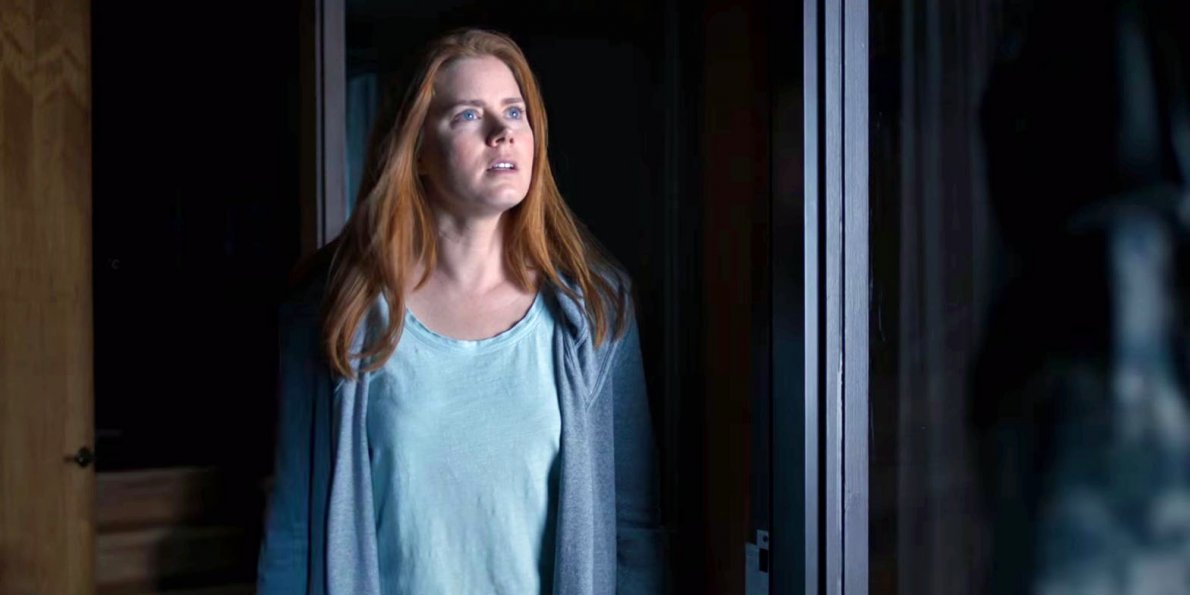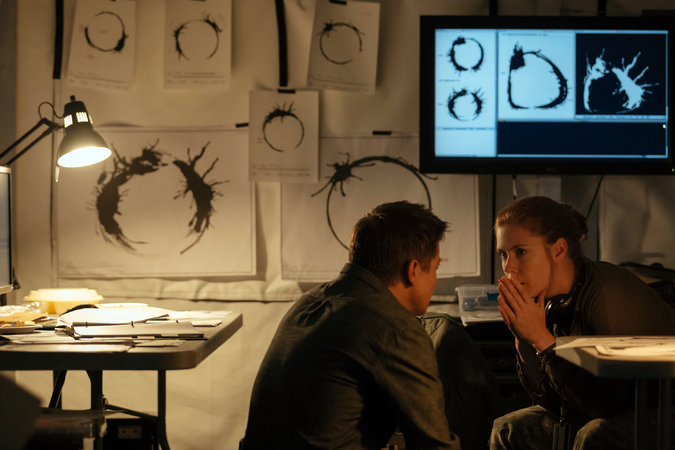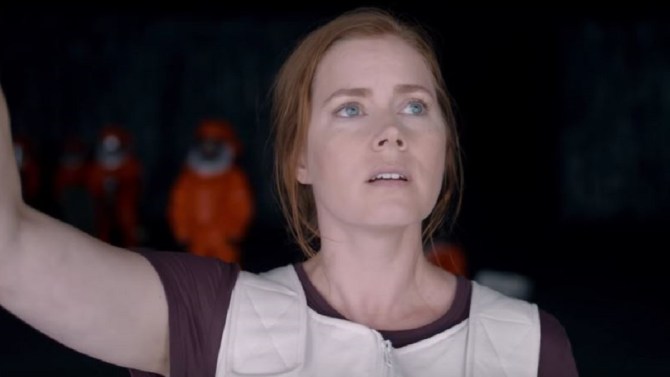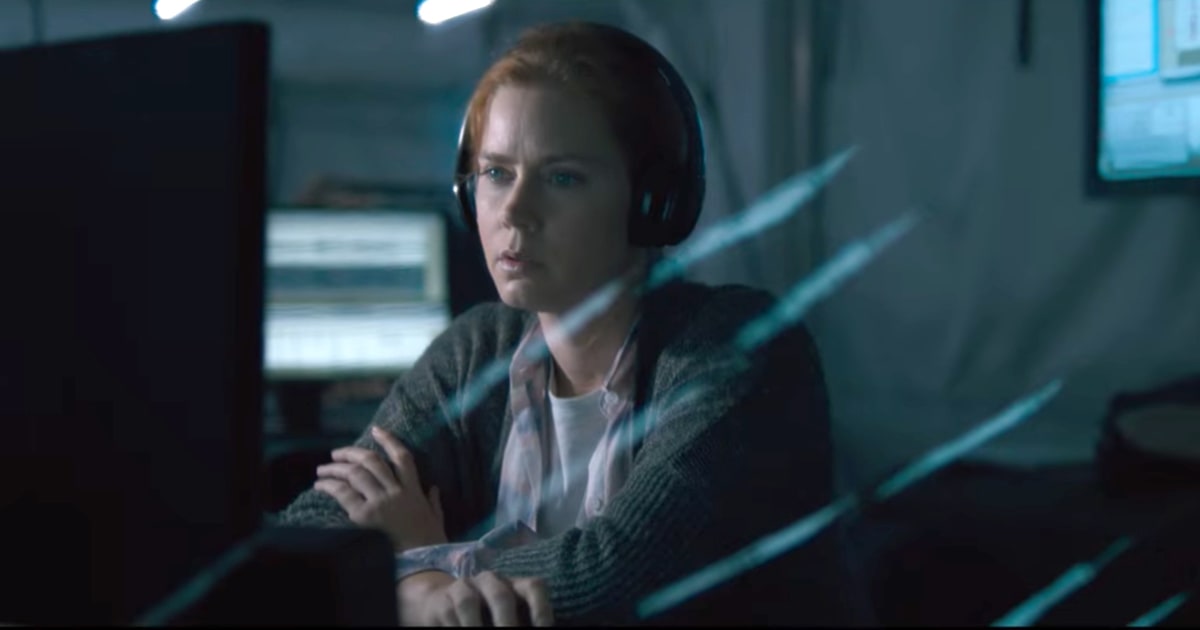
It is a fact that nowadays that there are many films getting released and most of them are, unfortunately, bad or just mediocre. Although, it could be said that 2016 was a pretty good year for film and “Arrival” (2016) definitely contributed to that. What makes it such a good movie, and maybe one of most the underrated ones of the year, along with its precise directing, beautiful performances, and whatever actually made this movie so good, is the screenplay.
Eric Heisserer hands in an unconventional story, based on Ted Chiang’s novel “Story of Your Life”, in a fresh and rarely seen way. It is funny thinking about it, because this man has also written the screenplays for “Nightmare on Elm Street” (2010), “Final Destination 5” (2011) and “The Thing” (2011).
The script of “Arrival” includes some elements that every screenwriter should think of when writing. Storytelling is a tool, and in order to overwhelm an audience, you have to understand the way this tool can be used.
This long-lasting experience will later let you find new ways to evolve this tool and manipulate your audience even more deeply. “Arrival” does all that and it’s why it can be considered a successful film. Here are six things you can learn from this film to become a better screenwriter (spoilers ahead).
1. Think of the Montage

When writing a script, you have to think of other elements of filmmaking as well. Clothes, places, or even the number of people included into your script are things that may seem less important, but they actually define the general value and price of your film. The most important element whose power you must not underestimate is the editing.
Not only you can control the rhythm of the film through considering how it’s edited, but you can also use it even from the screenwriting stage in order to tell a more compelling story.
The first sequence of “Arrival” is the best example to examine. The movie starts with a montage sequence of the birth and early death of Louise Banks’ (Amy Adams) daughter. After that sequence, the movie shows Louise going to her job on the day of the ‘arrival’. We, the audience, immediately assume that she is grieving, and in that way we sympathize with her. As screenplay theorist John Truby claims: “When you are writing a script you must introduce the character’s flaw first” (!).
There are two kinds of flaws: the moral and the psychological. The moral flaw is how the characters act toward others and the psychological flaw is what hurts their life. The fact that we see what hurts Louise’s life provokes empathy toward her, and that leads to one of some characteristics a hero or heroine must have, so the audience is more engaged with him/her and the story itself.
Of course, such a characteristic is pity. The thing is that we learn, by the end of the film, that the opening montage happens after the events of the movie and as a result we alone attached a meaning to Adams’ character.
This effect has its roots at the early years of cinema and the Kuleshov effect. This is a phenomenon in which a viewer derives meaning from two sequential shots that are ostensibly not interconnected. The famous example includes a shot of man simply looking at something out of the frame. The second shot is either a soup, a little girl in a coffin, or a beautiful woman.
The audience immediately assumes the man is either hungry, grieving, or a pervert, respectively, even though the first shot is the same in all of the three ‘situations’. “Arrival” uses that effect in a brilliant way by introducing a character who has an impact on us from the first moment.
2. Play with the Structure

Naturally, all of the above would not be possible if it were a linear film. “Arrival” uses a pretty rare technique, even for non-linear films. We are so used to seeing flashbacks, but how often do we see flash-forwards? Experimenting with the structure could give you the possibility to discover a whole other story that didn’t initially exist.
As Jean-Luc Godard has famously said: “A film has a beginning, a middle, and an end, but not necessarily with that order.” What’s important when playing with the structure is to do it, if it serves the story, and if it does not, you will probably end up with an incomprehensible story that no one cares about.
“Arrival” adapts the non-linear concept into its story by examining the contrast of higher-dimensional beings that can see all of time at once, with humans who obviously don’t.
The main theme here is that language and communication in general are limited by perspective, and at the end, we can see that the film is equally concerned about cinematic language. By experimenting with it, the filmmakers of “Arrival” inevitably also experimented with plot structure, an experience which revealed to them that in their case, theme and structure is one.
3. Perspective is Everything

For every movie, the screenwriter must choose the point of view from which the story will be told. On one hand, there is a limited point of view, where the audience experiences the story along with the protagonist and can only see what he/she sees.
On the other hand, there is an omniscient point of view where the story is not told solely through the protagonist’s eyes, but instead adapting other perspectives as well. The choice of perspective is a decision as to what information the audience will encounter over the course of the story and how they will experience it.
The story of “Arrival” is being told through Louise’s perspective, which seems logical because she is the apparent protagonist. Except she isn’t – the real protagonists are the aliens. They came to Earth so they can communicate with humans in order to be helped in the future.
It is their story told through Louise’s point of view. It is not so important to argue who the real protagonist is, but following this thesis allows us to examine the interesting choice of perspective in this film.
Being told through this perspective the story becomes very dynamic, and louise has the best point of view because she learns the biggest amount of information which makes the story itself more interesting. Imagine if it was told through the aliens’ or Ian Donnelly’s (Jeremy Renner) eyes. It would be boring and flat. Perspective IS everything.
4. Keep the Audience Guessing

The concealment of information, which is a result of limited perspective, can help you engage the audience with your story. Most blockbuster movies don’t give a role to the viewer; they just expect to show something, probably stupid, and nobody will question it. Great movies are characterized by their thought-provoking thesis. If the audience keeps guessing or identifies with the main character’s thoughts, then the filmmakers have done a good job.
In “Arrival”, there many questions unanswered by the film. Instead, the filmmakers leave the audience to understand alone. It seems irrational, but it is very common, even in other generally good films. Louise makes choices that at first glance may seem weird or unnatural because they are not explained and “leave some dots unconnected.”
This not only keeps the interest but it shows respect to the audience. A perfect example is when Louise sleeps after the bomb explosions. She sees a dream? Is it a flash-forward? Is it real? Will it affect her judgment?
5. A Good Setup Means a Good Payoff

A setup is when a screenwriter or even a director establishes something early on in the movie and then uses what they’ve established in a later scene. Of course, these ‘consequences’ can be either long term (beginning-end of film) or short term (beginning-end of scene). The setups can be objects, character traits, or environments.
Think of a spy movie that uses a gadget out of nowhere just for convenience, or in “Star Wars: Episode VII – The Force Awakens” (2015) when Rey (Daisy Ridley) can do so many things she shouldn’t be able to do. Setups are very important because they do not only make the story strong, but they also provide good payoffs which emotionally touch the audience.
There are plenty of examples of good setups and payoffs in “Arrival”. Think of the first sequence when we see her future, and the end when we learn that Ian is her husband, or the early established idea that if you immerse yourself into a foreign language you can actually rewire your brain and determine the way you think. At the end, Louise learns the alien language and sees the future. Something that does not seem unnatural or convenient or fake.
6. Breaking Genre Conventions

It is really helpful for a writer to have a deeper knowledge for the genre he or she is working in and the conventions that come with it. Genre is a set of expectations the audience has when they watch a movie. For example, in a romantic comedy, the audience expects to see a story that examines the relationship of two people in a mostly comedic way. If, by the middle of the film, there is no couple or even a kind of relationship, everyone will be wondering what is going on.
In a story about aliens who come to Earth, we probably expect to see violent extra-terrestrial beings who want to destroy humanity. In “Arrival”, we meet aliens who want to help us, but again there is the menace of the unknown and human fear, which is actually a convention of the genre. In addition, at the beginning we see a mother who lost her child and we assume that this fact could be her motive for success. We have seen it so many times.
What makes “Arrival” a great movie is that it plays with conventions and expectations and in that way, it successfully manipulates the audience. What is more interesting of a film that you don’t know what will happen next? The challenge is to keep convention and avoid cliché in order to keep a viewer on the edge of his or her seat.
Author Bio: Alexandros Rellos is currently a film student in Greece. He has written and directed three short films and dreams that one day cinema will respond to his hopeless love. You can support his future cinematic projects here: https://www.patreon.com/alexandrosrellos.